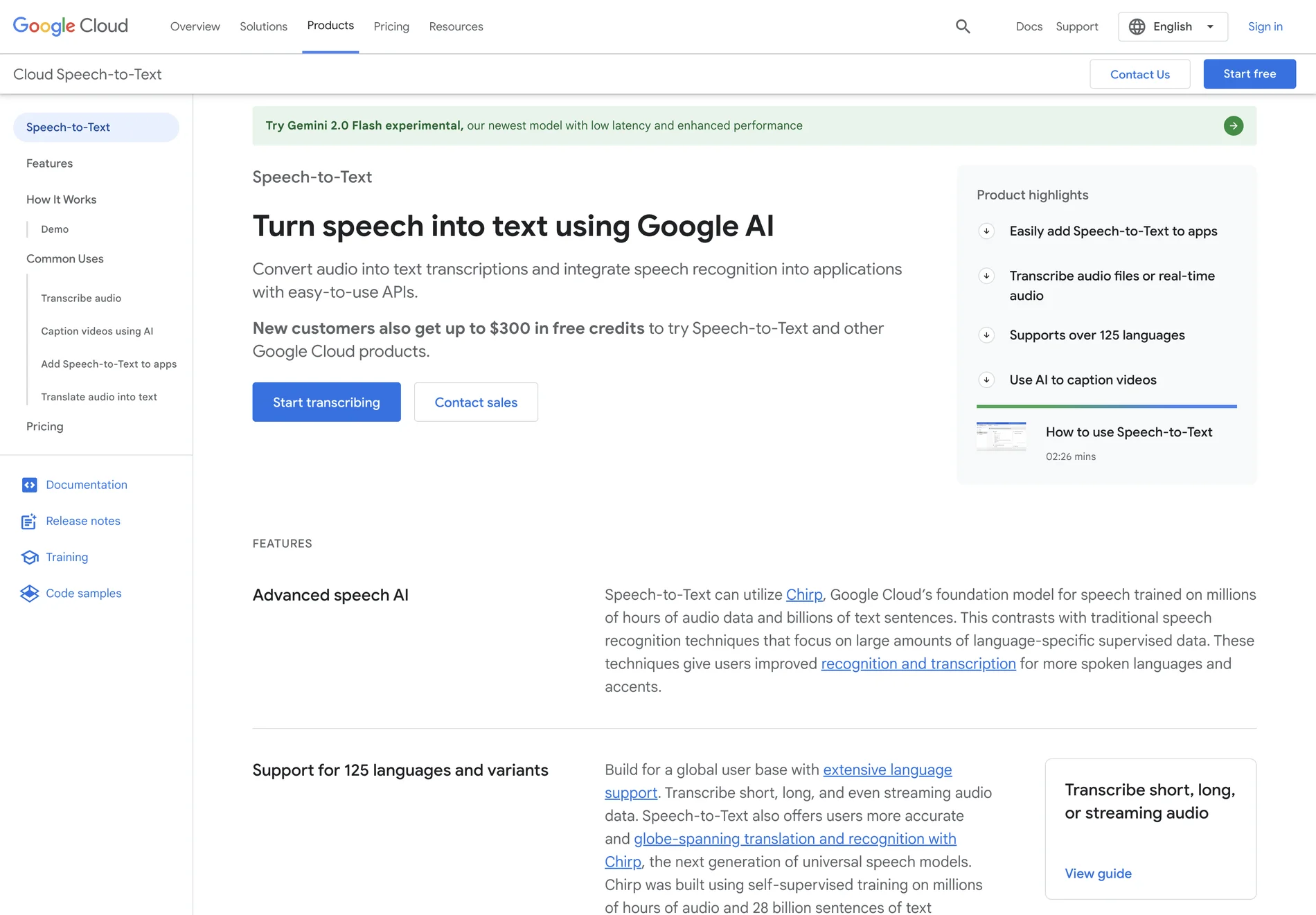Speech-to-Text: Revolutionizing Speech Recognition with AI
Introduction
In the era of digital transformation, the ability to convert spoken language into written text has become increasingly important. Google Cloud's Speech-to-Text service stands at the forefront of this technological revolution, offering a robust solution for speech recognition and transcription. This AI-powered tool not only converts audio into text but also integrates speech recognition seamlessly into applications through its user-friendly APIs.
Key Features
Advanced Speech AI
Speech-to-Text leverages Chirp, Google Cloud's foundation model for speech, which is trained on millions of hours of audio data and billions of text sentences. This advanced model outperforms traditional speech recognition techniques, providing improved recognition and transcription for a wider range of spoken languages and accents.
Extensive Language Support
With support for over 125 languages and variants, Speech-to-Text is designed to cater to a global user base. Whether you need to transcribe short audio clips, long recordings, or even streaming audio, this tool offers accurate and globe-spanning translation and recognition.
Customizable Models
Speech-to-Text offers a variety of pretrained models optimized for different domains, such as voice control, phone calls, and video transcription. Users can easily customize these models to meet specific quality requirements, making it a versatile solution for various applications.
Enterprise-Grade Security
The Speech-to-Text API v2 includes out-of-the-box regulatory and security compliance, ensuring that enterprise and business customers can rely on added security measures. Features like data residency, enterprise-grade encryption, and audit logging provide a secure environment for transcription needs.
How It Works
Speech-to-Text employs three main methods for speech recognition: synchronous, asynchronous, and streaming. Each method returns text results based on the specific needs of the transcription, whether it's for post-processing, periodic updates, or real-time applications.
Common Uses
Transcribe Audio
Create accurate audio transcriptions from file uploads or real-time audio inputs. This feature is invaluable for creating subtitles for videos, indexing content, and more.
Caption Videos Using AI
Use Speech-to-Text to generate subtitles for videos, either for existing content or in real-time for streaming purposes. The tool's video transcription model is ideal for indexing or subtitling video and multispeaker content.
Add Speech-to-Text to Apps
Integrate speech recognition into your applications quickly and easily with Google Cloud's pretrained Speech-to-Text API. This allows developers to enable AI capabilities without extensive machine learning expertise.
Pricing
Speech-to-Text offers flexible pricing based on the API version, channels, batch methods, and additional Google Cloud service costs. New customers can take advantage of up to $300 in free credits to explore the service.
Conclusion
Google Cloud's Speech-to-Text is a powerful tool that leverages advanced AI to transform speech recognition and transcription. With its extensive language support, customizable models, and enterprise-grade security, it is an essential solution for businesses and developers looking to integrate speech-to-text capabilities into their applications.
For more information, visit the on Google Cloud.

